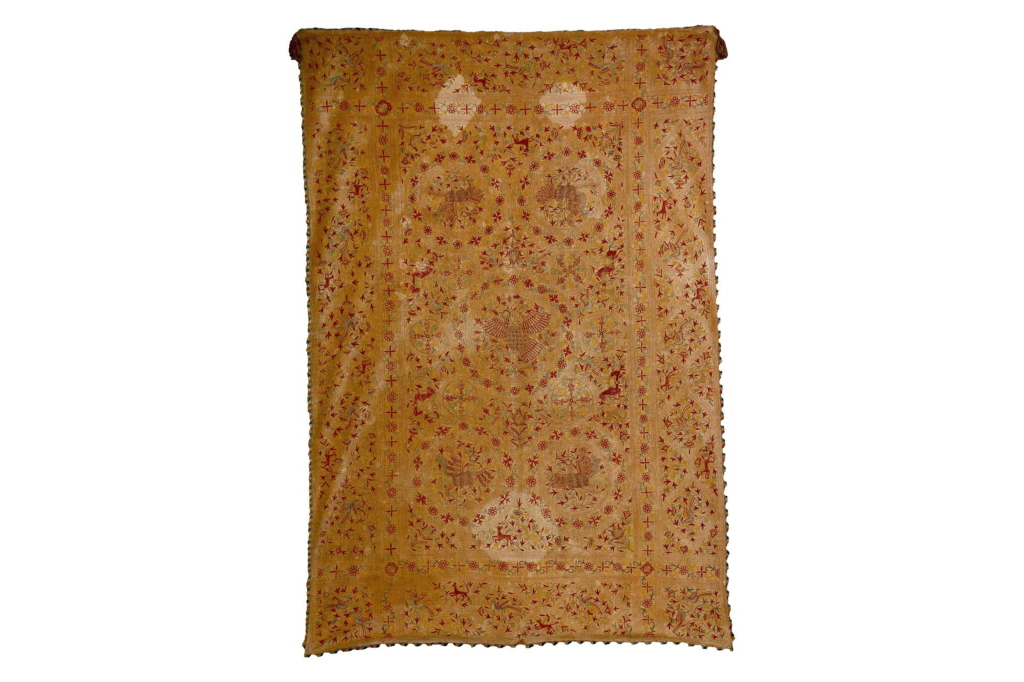
India, possibly Cambay, Gujarat
17th century
Cotton; loose silk polychrome threads; lint cotton filling.
Godrim is a term taken from the Indian for ‘quilt’. This piece is made of two cotton sheets, embroidered together, with a lint cotton filling giving it relief and greater comfort. The embroidery is predominantly executed in backstitch, with its decoration featuring vegetal motifs, exotic birds, cruciform designs, knights in Portuguese dress and, in the central medallion, a pelican.
Indian textiles, and particularly these godrims, fascinated the Portuguese court when Vasco da Gama presented them on his return from his first voyage. This quickly turned into orders from the wealthy classes, transforming such textiles into objects of luxury and ostentation.
The demand was due to their aesthetic quality and the successful blending of East and West. From the East came the raw material, the technique, the symbolic and decorative features; while from the West came the symbolic Portuguese values (heraldic, for example). They also satisfied various requirements: bed covers, canopies, wall decoration for residences or churches, balcony adornment or bringing more platform comfort on solemn occasions.
These pieces were predominantly produced in Khambhat, in the Gujarat region, and were transported annually in great numbers by the ships of the India Run via Goa, in the then Portuguese State of India.
